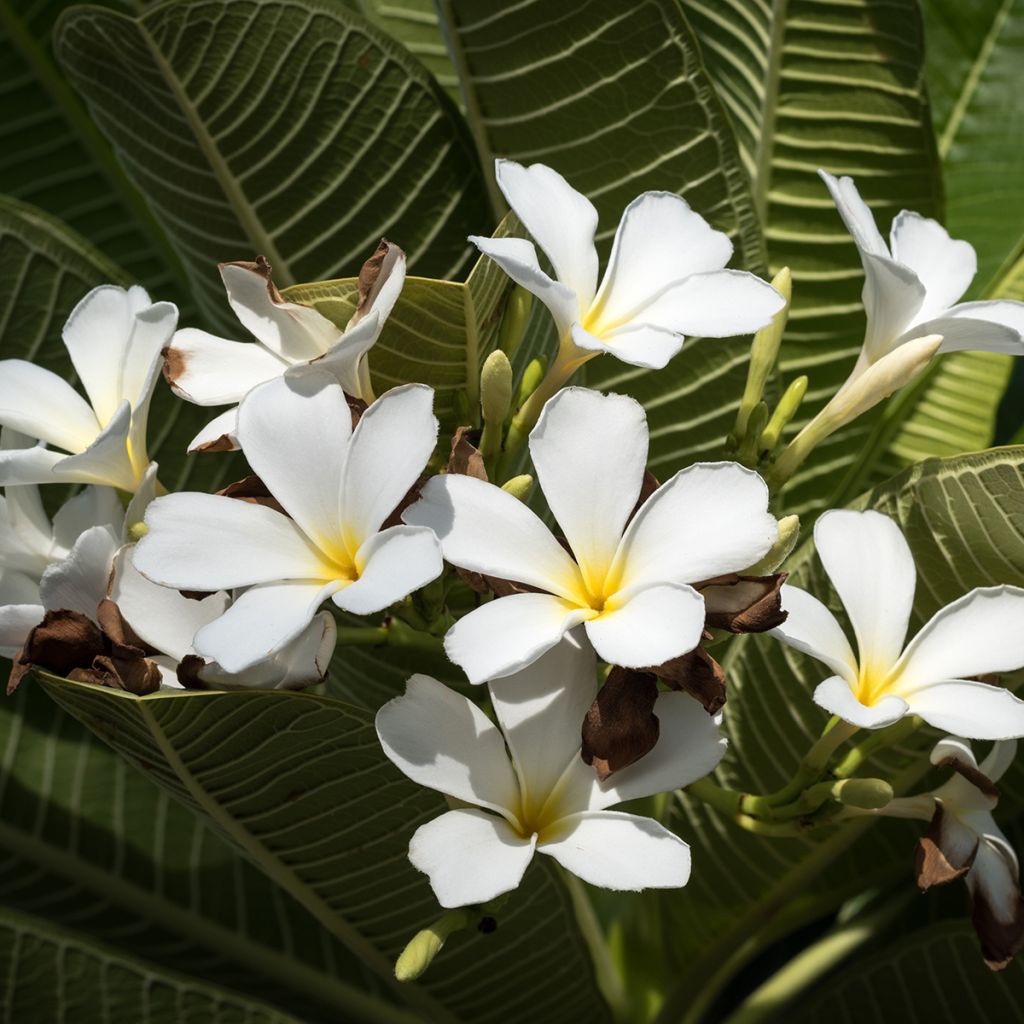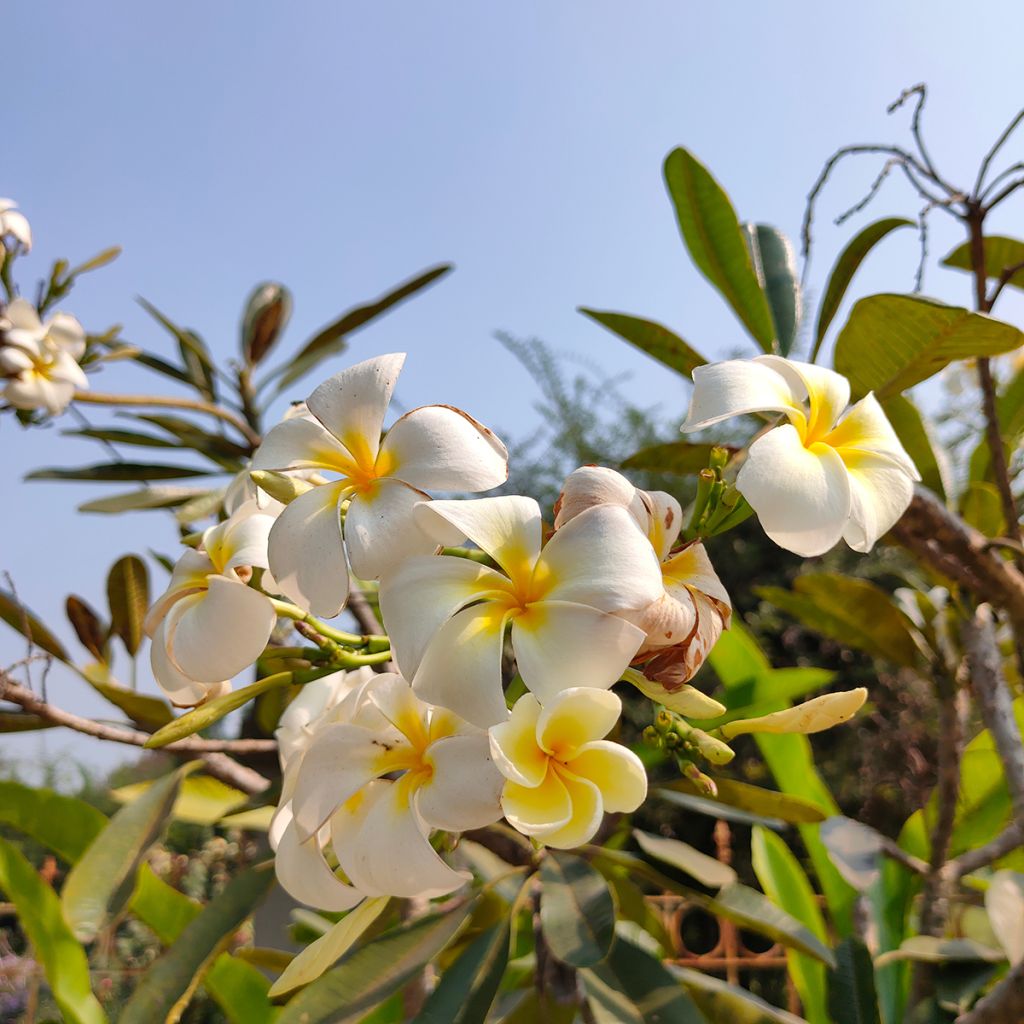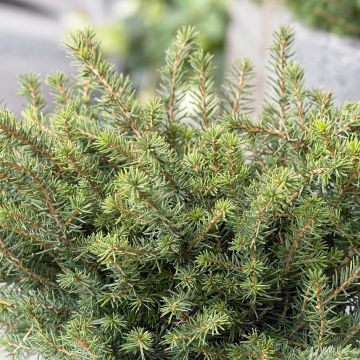

Plumeria obtusa - Frangipanier


Plumeria obtusa - Frangipanier


Plumeria obtusa - Frangipanier


Plumeria obtusa - Frangipanier


Plumeria obtusa - Frangipanier


Plumeria obtusa - Frangipanier


Plumeria obtusa - Frangipanier


Plumeria obtusa - Frangipanier


Plumeria obtusa - Frangipanier
Plumeria obtusa - Frangipani
Plumeria obtusa
Frangipani
Special offer!
Receive a €20 voucher for any order over €90 (excluding delivery costs, credit notes, and plastic-free options)!
1- Add your favorite plants to your cart.
2- Once you have reached €90, confirm your order (you can even choose the delivery date!).
3- As soon as your order is shipped, you will receive an email containing your voucher code, valid for 3 months (90 days).
Your voucher is unique and can only be used once, for any order with a minimum value of €20, excluding delivery costs.
Can be combined with other current offers, non-divisible and non-refundable.
Why not try an alternative variety in stock?
View all →This plant carries a 24 months recovery warranty
More information
We guarantee the quality of our plants for a full growing cycle, and will replace at our expense any plant that fails to recover under normal climatic and planting conditions.
Would this plant suit my garden?
Set up your Plantfit profile →
Description
Plumeria obtusa, like other species of Frangipani, originates from tropical America. Unlike other tropical Frangipani, it does not lose its leaves during the dry season. Like others, it forms a large bush or small tree with glossy dark green leaves and produces beautiful white flowers, the most fragrant in the genus. These flowers bloom throughout the year in their native lands, enchanting passing travellers. This plant is not hardy in our climate and should therefore be grown in a container to be protected as soon as temperatures drop. It will then form a bush up to 2.50m (8ft) or 3m (10ft) high, which requires a suitable and bright location.
Frangipani belongs to the large family Apocynaceae, which includes about 350 genera and 5000 species, most of which are found in tropical and subtropical areas. However, some genera also grow in Mediterranean regions, such as Oleander (Nerium oleander) or Carissa, and even in temperate zones, such as Periwinkle (Vinca). These are often toxic plants, many of which contain latex, but some are also used for medicinal purposes.
The Plumeria genus includes 7 species (or 8 according to classifications do not recognize P. acuminata as a synonym of P. rubra), native to subtropical and tropical regions of America, and which have been planted under the same climates in Africa and Asia, becoming almost a symbol of the tropics. The genus name comes from the botanist Charles Plumier, while the common name comes from the Italian nobleman, Marquis Frangipani, the inventor of a popular perfume. Legend has it that when European travellers in the Caribbean discovered a tree with a similar fragrance, they named it after him.
Plumeria obtusa is very similar to other species, while distinguishing itself with its evergreen foliage and almost continuous flowering. It is a purely tropical species, whose distribution ranges from the south of Florida (the Florida Keys) to the Caribbean, and from Mexico to the small state of Belize. It grows at altitudes ranging from sea level to 900m (2953ft), in different ecological environments: dry coastal forests, lowland rainforests, coastal thickets, and savannas.
It forms a small tree up to 6 or 8m (20 or 26ft) in height, with a relatively spreading habit and fleshy brown-green branches. The dark green, glossy, leathery foliage is composed of elongated obovate leaves, with blades 15 to 18cm (6 to 7in) long and 5 to 8cm (2 to 3in) wide, carried by petioles 1 to 4cm (1 to 2in) long. This beautiful evergreen foliage serves as a backdrop for almost uninterrupted flowers that are produced throughout the seasons. The corymbs bear numerous buds that open into immaculate white flowers, tinged with yellow at the centre. The corolla has a relatively short tube, from 0.9 to 2cm (1in), which opens into 5 more or less oval and gracefully curved petals. With a diameter of 6cm (2in) or more, these flowers exude a powerful lemony fragrance that surpasses that of other Frangipani.
Outside the tropics, this Frangipani must be grown in containers to be protected during winter. It is a strictly tropical plant that cannot be planted in the ground anywhere else. As the root system is constrained in its development by the size of the container, this will limit its size to 2.50m to 3m (8 to 10ft) . It is a magnificent plant, but you can only adopt it if you have a heated conservatory or a large, very bright room, otherwise it may wither due to lack of light. In these conditions, it will allow you to create a very distinctive tropical atmosphere with its unique design. In summer, you can place it on your terrace or along a pathway, in front of a bed composed of plants with an exotic appearance, but hardy enough to withstand winter outdoors. A curtain of bamboo made up of Fargesia robusta Wolong, a beautiful non-running species with yellow culms under the sun, will be perfect to create a background for your scene. In front of it, place other plants with a strong visual appeal, such as Musa basjoo Sakhalin, a Japanese Banana with beautiful typical leaves of the genus. Schefflera taiwaniana with its large, deeply cut palmate leaves will also fit perfectly into this distant horizons spirit.grouping.
While advertisers often use these flowers to convey an image of tropical beauty in shampoos, they can have a very different image in some Asian countries. For example, in the Philippines, where it is called Kalachuchi, it is associated with death because it is traditionally planted near cemeteries. But since Filipinos don't like to be sad, they also plant it as an ornamental tree in their gardens and use it to make necklaces.
Report an error about the product description
Plumeria obtusa - Frangipani in pictures






Plant habit
Flowering
Foliage
Safety measures
Botanical data
Plumeria
obtusa
Apocynaceae
Frangipani
Central America
ingestion
Cette plante est toxique si elle est ingérée volontairement ou involontairement.
Ne la plantez pas là où de jeunes enfants peuvent évoluer, et lavez-vous les mains après l'avoir manipulée.
Pensez à conserver l'étiquette de la plante, à la photographier ou à noter son nom, afin de faciliter le travail des professionnels de santé.
Davantage d'informations sur https://plantes-risque.info
Planting and care
Frangipani is a tropical tree that will not survive winters outdoors, beyond a tropical climate. Therefore, it must be planted in a pot to be able to be overwintered in a bright room where the temperature should never occasionally drop below +5°C (41°F) and ideally, be above +10°C (50°F) (heated conservatory, large bright room..).
Choose a sufficiently draining potting compost or, better yet, mix a potting compost with coarse sand and place gravel or clay balls at the bottom of the pot to prevent any water stagnation. Fertilize regularly, as this plant is quite nutrient-demanding in order to develop well. You can use a dilute liquid fertilizer or a slow-release organic fertilizer to avoid shocking the plant.
Water regularly in summer, allowing the soil to dry out slightly between waterings, then space waterings out in autumn.
Planting period
Intended location
Care
Planting & care advice
This item has not been reviewed yet - be the first to leave a review about it.
Similar products
Haven't found what you were looking for?
Hardiness is the lowest winter temperature a plant can endure without suffering serious damage or even dying. However, hardiness is affected by location (a sheltered area, such as a patio), protection (winter cover) and soil type (hardiness is improved by well-drained soil).

Photo Sharing Terms & Conditions
In order to encourage gardeners to interact and share their experiences, Promesse de fleurs offers various media enabling content to be uploaded onto its Site - in particular via the ‘Photo sharing’ module.
The User agrees to refrain from:
- Posting any content that is illegal, prejudicial, insulting, racist, inciteful to hatred, revisionist, contrary to public decency, that infringes on privacy or on the privacy rights of third parties, in particular the publicity rights of persons and goods, intellectual property rights, or the right to privacy.
- Submitting content on behalf of a third party;
- Impersonate the identity of a third party and/or publish any personal information about a third party;
In general, the User undertakes to refrain from any unethical behaviour.
All Content (in particular text, comments, files, images, photos, videos, creative works, etc.), which may be subject to property or intellectual property rights, image or other private rights, shall remain the property of the User, subject to the limited rights granted by the terms of the licence granted by Promesse de fleurs as stated below. Users are at liberty to publish or not to publish such Content on the Site, notably via the ‘Photo Sharing’ facility, and accept that this Content shall be made public and freely accessible, notably on the Internet.
Users further acknowledge, undertake to have ,and guarantee that they hold all necessary rights and permissions to publish such material on the Site, in particular with regard to the legislation in force pertaining to any privacy, property, intellectual property, image, or contractual rights, or rights of any other nature. By publishing such Content on the Site, Users acknowledge accepting full liability as publishers of the Content within the meaning of the law, and grant Promesse de fleurs, free of charge, an inclusive, worldwide licence for the said Content for the entire duration of its publication, including all reproduction, representation, up/downloading, displaying, performing, transmission, and storage rights.
Users also grant permission for their name to be linked to the Content and accept that this link may not always be made available.
By engaging in posting material, Users consent to their Content becoming automatically accessible on the Internet, in particular on other sites and/or blogs and/or web pages of the Promesse de fleurs site, including in particular social pages and the Promesse de fleurs catalogue.
Users may secure the removal of entrusted content free of charge by issuing a simple request via our contact form.
The flowering period indicated on our website applies to countries and regions located in USDA zone 8 (France, the United Kingdom, Ireland, the Netherlands, etc.)
It will vary according to where you live:
- In zones 9 to 10 (Italy, Spain, Greece, etc.), flowering will occur about 2 to 4 weeks earlier.
- In zones 6 to 7 (Germany, Poland, Slovenia, and lower mountainous regions), flowering will be delayed by 2 to 3 weeks.
- In zone 5 (Central Europe, Scandinavia), blooming will be delayed by 3 to 5 weeks.
In temperate climates, pruning of spring-flowering shrubs (forsythia, spireas, etc.) should be done just after flowering.
Pruning of summer-flowering shrubs (Indian Lilac, Perovskia, etc.) can be done in winter or spring.
In cold regions as well as with frost-sensitive plants, avoid pruning too early when severe frosts may still occur.
The planting period indicated on our website applies to countries and regions located in USDA zone 8 (France, United Kingdom, Ireland, Netherlands).
It will vary according to where you live:
- In Mediterranean zones (Marseille, Madrid, Milan, etc.), autumn and winter are the best planting periods.
- In continental zones (Strasbourg, Munich, Vienna, etc.), delay planting by 2 to 3 weeks in spring and bring it forward by 2 to 4 weeks in autumn.
- In mountainous regions (the Alps, Pyrenees, Carpathians, etc.), it is best to plant in late spring (May-June) or late summer (August-September).
The harvesting period indicated on our website applies to countries and regions in USDA zone 8 (France, England, Ireland, the Netherlands).
In colder areas (Scandinavia, Poland, Austria...) fruit and vegetable harvests are likely to be delayed by 3-4 weeks.
In warmer areas (Italy, Spain, Greece, etc.), harvesting will probably take place earlier, depending on weather conditions.
The sowing periods indicated on our website apply to countries and regions within USDA Zone 8 (France, UK, Ireland, Netherlands).
In colder areas (Scandinavia, Poland, Austria...), delay any outdoor sowing by 3-4 weeks, or sow under glass.
In warmer climes (Italy, Spain, Greece, etc.), bring outdoor sowing forward by a few weeks.

















































